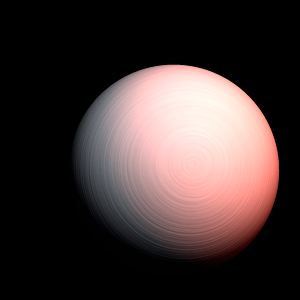|
|
Space Astro
|
Info for exoplanet "Apuslachal Si"
| Scientific (actual) data |
|---|
| Name | HD 103720 b |
| Planet status | Confirmed |
| Mass sini | 0.62 |
| Orbital period | 4.5557 |
| Semi major axis | 0.0498 |
| Orbit eccentricity | 0.086 |
| Discovered | 2014 |
| Updated | 2015-01-08 |
| Omega | 262 |
| Tperi | 2455390 |
| K | 89 |
| Publication | Published in a refereed paper |
| Detection type | Radial Velocity |
| Mass measurement type | Radial Velocity |
| Star name | HD 103720 |
| Right ascension | 179.17° |
| Declination | -2.78° |
| Mag v | 9.49 |
| Star distance | 41.6 |
| Star metallicity | -0.02 |
| Star mass | 0.794 |
| Star radius | 0.73 |
| Star sp type | K3V |
| Star age | 3.8 |
| Star temperature | 5017 |
| Wikipedia article | HD 103720 b |
Back
| |
| Fictional info (?) |
|---|
| Suggested name | Apuslachal Si |
| Planet type | Hot planet |
| It is a hot planet planet with a mass one-thousandth that of HD 103720, but two-and-a-half times that of all the other planets in its solar system combined. When viewed from Earth, this proximity to HD 103720 means the planet can only be seen near the western or eastern horizon during the early evening or early morning. The planet telescopically displays the complete range of phases, similar to Venus and the Moon, as it moves in its inner orbit relative to HD 103720, which reoccurs over the so-called synodic period approximately every 128 days.
Its north and south poles, therefore, lie where most other planets have their equators. |
| Atmosphere | Krypton | 64% |
| Ammonium hydrosulfide (NH4SH) | 18% |
| Nitrogen | 17% |
| Atmospheric pressure | 3 bar |
 |
| Moon | Delia Aerion-al | Very small potato shaped rocky planetoid |
| Mirlirr | Huge potato shaped crater-filled asteroid |
| Tisnus Thy | Large almost round oceanic moon |
| Garetlene-metar | Large irregular crater-filled asteroid |
| Google search for Apuslachal si |
|
Website by Joachim Michaelis
|
|
|
|